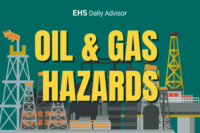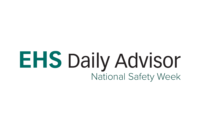Safety is a process, and as such, needs to be managed. This section offers resources to create a viable safety program, sell it to senior management, train supervisors and employees in using it, and then track and report your progress. Look also for ways to advance your own skills in these areas, both for your current job, and those that follow.
On episode 123 of EHS On Tap, Alka Ramchandani-Raj, co-chair of Littler’s workplace safety & health practice group, talks about the emergence of monkeypox and what it means for workplace safety.
Oil and gas industry workers face all kinds of hazards during all the different industrial processes they execute in order to drill and service a well. Here’s what you need to know about oil and gas industry hazards.
On episode 122 of EHS On Tap, Kevin Kelpe, continuing education manager at Diversified Fall Protection, talks about some new OSHA ladder safety requirements. This episode is sponsored by Diversified Fall Protection.
Back to Basics is a weekly feature that highlights important but possibly overlooked information that any EHS professional should know. This week, we examine the hazards associated with oil and gas extraction, and OSHA’s recommendations for oil and gas safety. Oil and gas industry workers face all kinds of hazards during all the different industrial […]
Working with machinery and moving machine parts is common in many workplaces, and according to OSHA, it has the potential to cause serious injuries amongst employees such as crushed fingers or hands, amputations, burns, or blindness. Here’s what you need to know about machine guarding.
As EHSDA’s National Safety Week wraps up, let’s recap the various content offerings that became available throughout the week. The content highlighted how to promote round-the-clock safety and health at your organization by staying up to date on all the latest safety trends. Special thanks to Avetta, KPA, and Industrial Scientific for sponsoring the week. Monday Back to Basics | […]
Different respirators clearly function differently, offering users two types of respiratory protection. Filtering facepiece respirators (FFR), like N95s and P100s, filter out particles like the SARS-CoV-2 virus that causes COVID-19 and the particulate matter in wildfire smoke. Other respirators supply clean respirable air. For example, airline respirators use compressed air from a remote source, and […]
In our latest installment of Ask the Expert, we hear from Claire Beich, the president and owner of Ascend Consulting EHS, LLC, about how to craft and invest in a safety program, and the future of technology and Environmental, Social, and Governance (ESG) initiatives in the workplace. Here’s what she had to say. Q: What […]
On July 27, the Occupational Safety and Health Administration (OSHA) announced citations for J & L Roofing Inc. of Pompano Beach, Florida, following an employee’s fatal fall and proposed $74,751 in penalties. On July 28, OSHA announced it also cited Lopez Roofing of Appleton, Wisconsin, with one repeat and one serious violation and proposed penalties […]
Back to Basics is a weekly feature that highlights important but possibly overlooked information that any EHS professional should know. This week, we examine OSHA’s standards for machine guarding in the general, construction, maritime, and agricultural industries. Working with machinery and moving machine parts is common in many workplaces, and according to OSHA, it has […]










